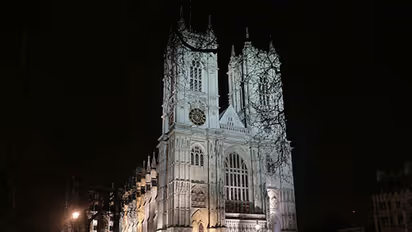Westminster Abbey: How the church of royal weddings saved 1000 lives during UK terror attack

Synopsis
The Islamic State terror group has taken responsibility for the attack. The ISIS attacker, who reportedly was born and raised in UK, mowed down a dozen pedestrians. A total of four people were killed in the attack.
But on March 22, during the deadly terror attack carried out by an Islamic State (ISIS) lone wolf near the Parliament Square and within the grounds of the Palace of Westminster, in central London, the Abbey saved over 1000 lives.
The ISIS attacker, who reportedly was born and raised in UK, mowed down a dozen pedestrians while driving a grey Hyundai i40 across the Westminster Bridge.
In the attack, four people were killed - two died after the perpetrator rammed his car into pedestrians, a police officer who was stabbed, and the suspect, who was shot.
Around 1,000 people took refuge at the Westminster Abbey for safety and all of then are now being processed by police. Reports said that former MP Tom Levitt hid in the crypt under Westminster Abbey with 10 others.
"Some people came tuning in screaming and we all ran for the crypt. They saw the man with the knife and just ran to warn us. People were rubbing and screaming," he told The Telegraph.
The history of Westminster Abbey
Built in the 11th century by Edward the Confessor, the Abbey is located on the site of a former monastery. The Abbey, formally known as the Collegiate Church of St Peter, Westminster, is a "royal peculiar," which means it belongs directly to the sovereign.
It was then rebuilt in 1245 by Henry III, and modelled on the imposing gothic cathedrals of Europe. It is also the final resting place of 17 kings and queens and has become known for its burials as much as its weddings.
The Abbey has a sitting capacity of 2,000, but for the Queen's coronation in 1953, arrangements were made to seat 8,200 people.
Check the Breaking News Today and Latest News from across India and around the world. Stay updated with the latest World News and global developments from politics to economy and current affairs. Get in-depth coverage of China News, Europe News, Pakistan News, and South Asia News, along with top headlines from the UK and US. Follow expert analysis, international trends, and breaking updates from around the globe. Download the Asianet News Official App from the Android Play Store and iPhone App Store for accurate and timely news updates anytime, anywhere.